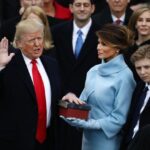The United States’ entry into World War II, a seemingly inevitable event in hindsight, was preceded by a period of intense national debate. Before the attack on Pearl Harbor in December 1941, American public opinion was deeply divided on the country’s role in the escalating global conflict. This article explores the complex factors and competing ideologies that ultimately led the U.S. into the war.
Isolationism vs. Interventionism: A Nation Divided
Following the devastating losses and perceived failures of World War I, a strong isolationist sentiment gripped the nation. The disillusionment with international involvement fueled a desire to focus on domestic issues, particularly the economic struggles of the Great Depression. This sentiment manifested in the Neutrality Acts of the late 1930s, designed to prevent American entanglement in foreign wars by prohibiting trade and financial assistance to belligerent nations.
Despite the growing threat posed by Nazi Germany’s expansionist policies in Europe and Japanese aggression in Asia, many Americans clung to the belief that the nation’s security was best served by remaining neutral. Isolationist groups, such as the America First Committee, actively campaigned against U.S. intervention, arguing that the war was a European affair and that America should prioritize its own defense and avoid provoking either side. Prominent figures like Charles Lindbergh championed this view, advocating for an “independent American destiny” free from foreign entanglements. Lindbergh argued for defending the Western Hemisphere but against fighting in conflicts unrelated to direct American interests.
However, as the war intensified with the fall of France in 1940, a countervailing interventionist movement gained momentum. Interventionists argued that the survival of European democracies was crucial to American security. They warned that a Nazi-dominated Europe would pose an existential threat to the U.S., leaving it isolated and vulnerable in a world controlled by a hostile power. President Franklin D. Roosevelt articulated this concern, likening the prospect of a Nazi victory to “living at the point of a gun.” While some interventionists advocated for direct military involvement, others believed that aiding Great Britain through material support was sufficient to prevent American entry into the war.
The Turning Point: Pearl Harbor
The debate between isolationists and interventionists raged until the Japanese attack on Pearl Harbor on December 7, 1941. This surprise attack, which killed over 2,400 Americans and damaged or destroyed numerous U.S. naval vessels and aircraft, galvanized public opinion and dramatically shifted the national mood.
The attack shattered the illusion of American invulnerability and erased any remaining support for isolationism. On December 8, 1941, President Roosevelt addressed Congress, declaring that the day would “live in infamy” and requesting a declaration of war against Japan. Congress overwhelmingly approved the declaration, officially bringing the U.S. into World War II. Three days later, Germany and Italy declared war on the United States, solidifying America’s role as a major combatant in the global conflict.
Conclusion
The U.S. entry into World War II was a culmination of complex factors, including the rise of aggressive totalitarian regimes, the failure of appeasement, and a profound shift in American public opinion. While isolationism initially prevailed, the escalating global crisis and the devastating attack on Pearl Harbor ultimately propelled the nation into war, transforming the U.S. into a global superpower and reshaping the course of the 20th century. The debate surrounding American involvement in the war serves as a reminder of the enduring tension between national self-interest and international responsibility.

